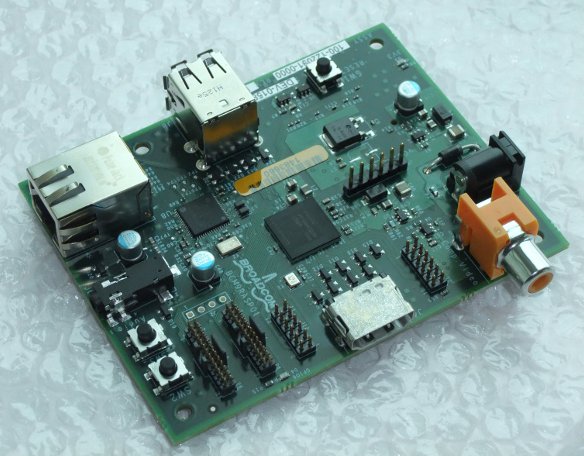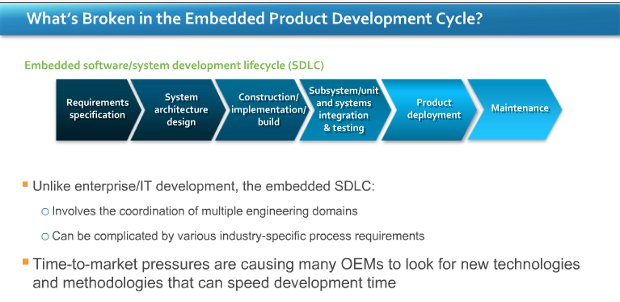The full schedule for AnDevCon III (14-17 May 2012) has finally been released with 42 different classes and several workshops. The sessions will be organized into five subject area: Developer Essentials: These technical classes and workshops are for all Android developers and cover all programming topics. Android Enterprise: These technical sessions cover topics specific to building and managing apps for employees, business customers and partners, such as back-end integration corporate data center communications, ERP or CRM systems. Android Business: These classes and workshops are for entrepreneurial developers who want to learn the most effective ways of distributing and selling Android apps, including how to maximize profit through the Android Market. Android Tablets and beyond: These classes and workshops are specific to commercial devices beyond smartphones, including tablets, Google TV, and other platforms. Embedded Android: These classes and workshops are for developers working close to the hardware, such as on custom […]
Embedded Linux Conference 2012 Schedule
The Embedded Linux Conference (ELC 2012) will take place on February 15 – 15, 2012 at Hotel Sofitel in San Francisco. ELC consists of 3 days of presentations, tutorials and sessions. There will be over 50 sessions during those 3 days. I’ll highlight a few sessions that I find particularly interesting. February 15 10:30 – 11: 30 – Profiling and Performance Measurement Techniques Using Linux Kernel Tools by Govindraj Raja, Software Engineer at Texas Instruments and Partha S Basak, Technical Manager at Texas Instruments. With ever growing features and functionality of Linux kernel, one needs methods to trace and profile parts of Linux kernel for various reasons like performance analysis, debugging etc. This presentation aims at providing an insight into few of these tools and their salient features. Supporting use case data as captured on open source OMAP4 pandaboard is also provided. 14:00 – 15:00 – The Yocto Project Overview […]
Xibo Digital Signage in Raspberry Pi Emulator (Step 1)
Xibo (pronounced eX-E-bO) is an open source, multi-display, multi-zone, fully scheduled digital signage client/server solution written in Python and dotNET. If you are not familiar with Xibo you can visit http://xibo.org.uk/ or/and read my introduction XIBO: An Open Source Digital Signage Server/Client. The Raspberry Pi is a low cost board based on Broadcom BCM2835 (ARM1176 Core) that should be available for sale at the end of January / beginning of February at http://www.raspberrypi.com. There are two versions of the board: Model A: 128 MB RAM and no Ethernet Model B: 256 MB RAM with 10/100 Mbit Ethernet BCM 2835 also features a Videocore GPU supporting OpenGL and 1080p30 video decoding that makes it ideal for multimedia applications such as digital signage players. The board support both HDMI and composite video output. You should also be able to connect a LCD via the DSI interface. If we can make Xibo run […]
Bsquare Releases TestQuest 10 for Android and Windows Embedded
BSQUARE announced the availability of TestQuest 10, a new test automation technology suite that brings together key features of TestQuest Pro (automated test solution for embedded systems) and TestQuest CountDown (mobile devices and applications testing) and adds new functionality to create a new and powerful test automation solution, that aims at reducing test costs and complexity. Here are TestQuest 10 highlights: Reduces per test pass costs and complexity of test case development by integrating with popular tools Scalable automation enables test case reuse across multiple devices increasing execution accuracy Supports test execution on desktop prototypes, emulators and simulators enabling test execution to start before production hardware is available Supports testing for devices running on Android and Windows Embedded platforms Improved intelligent text recognition and language capabilities — up to 92% processing speed improvement TestQuest 10 is comprises of three components: Test Designer – Creates automated tests quickly for test case […]
Design West Summit – 26-29 March 2012
UBM Design announced the schedule and pass pricing for Design West Summit (previously Embedded System Conference) which will now bring 7 summits in one location (San Jose McEnery Convention Center) on 26-29 March 2012: Embedded Systems Conference & Exhibition – Conference Dates: March 26 – 29, 2012. Exhibition Dates: March 27-29, 2012. (See Details below) Android Summit – March 28, 2012 – Everything Android from embedded design to Apps development. Android Certification Program Android Speed Training Android Fundamentals Course on the Expo Floor Android Conference Program Multicore DevCon– March 27 & 28, 2012 – Embedded multicore and multimedia. 7th annual Multicore Conference Courses Multicore Expo Floor Zone Multicore Fundementals Courses Keynote Addresses Industry Addresses Expo floor parties and giveaways BlackHat – March 29, 2012 – One-day conference focused on security in embedded systems. Security Fundementals Course Black Hat Summit Conference Courses Security focused presentations in the expo floor theater Keynotes […]
400 Free Raspberry Pi (Development) Boards for Qt 5 Developers
Remember the 25 – 35 USD ARM11 board Raspberry Pi ? Nokia is now getting involved and plans to speed up Qt 5 development on this nice little hardware. The Raspberry Pi Foundation has announced that Nokia would purchase 400 boards next month and give them away to Qt 5 developers who are willing to port software, develop apps, and test and improve the Qt 5 Linux stack. Mostly likely it will be the “high-end” 35 USD version with Ethernet support and 2556 MB RAM as show below. Beside its ridiculously cheap price, the board key features include Linux support, embedded GPU and OpenGL ES libraries that makes it a usable multimedia device capable of outputting 1080p. Nokia and ICS engineers have already started to port Qt to the Raspberry Pi board using the alpha boards. You can see the Qt Quick 2 emitter demo below running on one of the […]
Technologies and Techniques to Accelerate Embedded Development
I’ve recently attended a webinar entitled “Accelerate Your Next Embedded Development Project: Essential Tools and Techniques for Every Phase of Your Project Lifecycle” presented by Wind river and VDC Research. The two speakers were: Marc Brown, Wind River VP, Tools and Marketing Operation. Christopher Rommel, Senior Analyst at VDC Research. The webinar was composed of three sections: Industry Challenges. (Wind River) Embedded Development: Data and Trends. (VDC Research) New ways to accelerate development (Wind River) Industry challenges Marc describes the new challenges for device software drivers: Increased security, safety and quality requirements for connectivity Performance scalability: multi-cores, many cores and SoC support. Pressure to lower OPEX (Operating Expenses) Companies are now pushed to increase performance, become more cost effective and provide a better connectivity while at the same time decrease time to market, project risks and security issues. Data and Trends Christopher first present a slide showing there are still […]
Build Community Android Distribution and Ensure the Quality – ELCE 2011
Jim Huang, developer and co-founder of 0xlab, explains how they built an Android distribution with Linaro at Embedded Linux Conference Europe 2011. Abstract: While developing Android distributions, 0xdroid and LEB (Linaro Evaluation Build), we learn much about the development approach to non-traditional open source software model such as Android Open Source Project. This session shares the experience how 0xlab established the community, contributes to upstream (in unusual way), and leveraged the strong efforts from Linaro. Also, 0xlab develops a serial of open source projects to ensure overall performance and quality for better user experience. Jean-Luc Aufranc (CNXSoft)Jean-Luc started CNX Software in 2010 as a part-time endeavor, before quitting his job as a software engineering manager, and starting to write daily news, and reviews full time later in 2011. www.cnx-software.com








